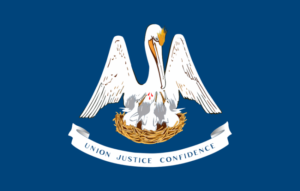Trusts – Adding property to trusts
§1932. Form. An addition of property to an existing trust must be made and accepted in the form required for such a donation free of trust.
A Civil Law Tradition
§1932. Form. An addition of property to an existing trust must be made and accepted in the form required for such a donation free of trust.
§1754. Incorporation by reference. A trust, whether inter vivos or testamentary, may incorporate by reference any or all of the terms of an existing trust. Unless the instrument otherwise provides, all amendments of the existing trust in force on the date of the execution of the instrument creating the new trust shall be deemed incorporated, but neither subsequent modification nor termination of the existing trust shall have any effect on the new trust.
§1753. Technical language not required; interpretation of instrument. No particular language is required to create a trust, but it must clearly appear that the creation of a trust is intended. A trust instrument shall be given an interpretation that will sustain the effectiveness of its provisions if the trust instrument is susceptible of such an interpretation.
§1803. Requirement that beneficiary be in being and ascertainable. A beneficiary must be in being and ascertainable on the date of the creation of the trust, except as otherwise provided in this Code. An unborn child is deemed a person in being and ascertainable, if he is born alive.
§1821. When testamentary trust created. A testamentary trust is created at the moment of the settlor’s death.
§1822. W’hen inter vivos trust created. An inter vivos trust is created upon execution of the trust instrument.
§1785. Manner in which trustee chosen. An original trustee, an alternate trustee, or a successor trustee may be designated in the trust instrument or chosen by the use of a method provided in the trust instrument, but neither failure of the trust instrument to so provide nor disqualification or removal of the trustee for any reason, incompetence or unwillingness to act of the person so designated or chosen shall invalidate the trust. In such a case, the proper court shall appoint one or more trustees.
§1823. Retroactive nature of trustee’s acceptance. A trustee’s acceptance is retroactive to the date of creation of the trust.
§1751. Form of testamentary trust. A testamentary trust may be created only in one of the forms prescribed by the laws regulating donations mortis causa.
§1755. Acceptance by trustee. The trustee may accept the trust in the trust instrument or in a separate instrument.
§1824. Consequence of trustee’s failure to accept. If the trustee was not a party to the trust instrument, he must accept the trust in writing within a reasonable time after its creation, or the proper court shall appoint a trustee.
§1788. Resignation of trustee. A trustee may resign at any time by giving written notice of resignation to each of the beneficiaries or by mailing written notice to each at his last known address. The trust instrument may provide another method of resignation and notice.
§1752. Form of inter vivos trust. An inter vivos trust may be created only by authentic act or by act under private signature executed in the presence of two witnesses and duly acknowledged by the settlor or by the affidavit of one of the attesting witnesses.
§1731. Trust defined. A trust, as the term is used in this Code, is the relationship resulting from the transfer of title to property to a person to be administered by him as a fiduciary for the benefit of another.
§1781. Trustee defined. A trustee is a person to whom title to the trust property is transferred to be administered by him as a fiduciary.
§1801. Beneficiary defined. A beneficiary is a person for whose benefit the trust is created and may be a natural person, corporation, partnership, or other legal entity having the capacity to receive property. A trustee of a trust, in his capacity of trustee, can be the beneficiary of another trust. Neither the.heir, legatee, or assignee of a designated beneficiary, nor a beneficiary by reason of a substitution under Sub part B of Part III of this Chapter, is considered a beneficiary for the purpose of fixing the maximum allowable term of the trust.
